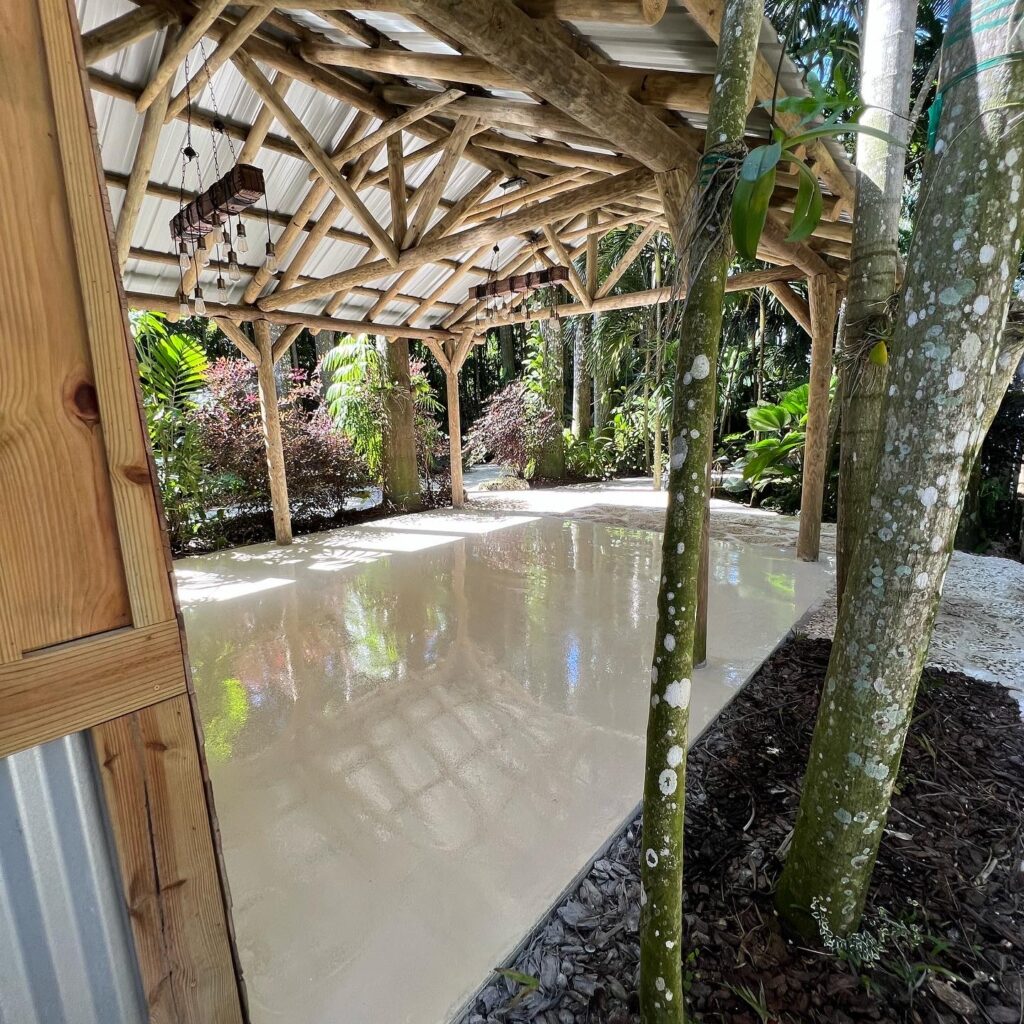In today’s world, the emphasis on sustainability and eco-friendly practices has permeated every aspect of our lives, including building and construction. As we strive to reduce our environmental footprint, the materials we choose for our homes and businesses play a crucial role. Among the myriad of options available, epoxy flooring stands out as a sustainable choice that combines durability, aesthetic appeal, and environmental responsibility. This article explores the eco-friendly advantages of epoxy flooring, highlighting its contributions to sustainability, energy efficiency, and responsible installation practices.
Importance of Eco-Friendly Building Materials
The construction industry has a significant impact on the environment, from the extraction of raw materials to the energy consumed during the building process and the waste generated at the end of a building’s life. Eco-friendly building materials are essential in mitigating these impacts. They help reduce greenhouse gas emissions, minimize waste, and promote the use of renewable resources. By choosing sustainable materials, we contribute to a healthier planet and promote a circular economy where resources are reused and recycled. In this context, epoxy flooring offers several eco-friendly benefits that make it an excellent choice for modern, sustainable construction.
Overview of Epoxy Flooring Benefits
Epoxy flooring is a versatile and durable flooring solution made from a combination of resin and hardener. This blend creates a rigid plastic material that adheres seamlessly to concrete surfaces, providing a high-performance floor with a sleek, attractive finish. Beyond its aesthetic appeal and durability, epoxy flooring offers numerous benefits that align with eco-friendly principles. These include low volatile organic compound (VOC) emissions, a long lifespan that reduces waste, and energy-efficient properties. By choosing epoxy flooring, building owners can achieve a beautiful, long-lasting floor while also supporting environmental sustainability.
Sustainability Features
Low VOC Emissions
Volatile organic compounds (VOCs) are harmful chemicals that can be released into the air from certain building materials, contributing to indoor air pollution and posing health risks to occupants. Traditional flooring materials, such as carpet and certain types of vinyl, can emit high levels of VOCs. In contrast, epoxy flooring is formulated to have low VOC emissions. Modern epoxy products are designed to meet stringent environmental standards, ensuring that they contribute to healthier indoor air quality. By reducing the release of harmful chemicals, epoxy flooring supports a safer and more sustainable indoor environment.
Long Lifespan Reducing Waste
One of the key sustainability features of epoxy flooring is its exceptional durability and long lifespan. Unlike other flooring options that may need frequent replacement due to wear and tear, epoxy floors can last for decades with proper maintenance. This longevity significantly reduces the amount of waste generated over time, as fewer materials are needed for repairs and replacements. By choosing a long-lasting flooring solution, building owners can minimize their environmental impact and contribute to a more sustainable use of resources.
Energy Efficiency
Reflective Properties Reducing Lighting Needs
Epoxy flooring’s glossy finish is not only aesthetically pleasing but also highly functional in terms of energy efficiency. The reflective properties of epoxy floors can enhance the distribution of natural and artificial light within a space, reducing the need for additional lighting. This increased reflectivity can lead to significant energy savings, especially in large commercial or industrial settings where lighting costs can be substantial. By improving light distribution and reducing energy consumption, epoxy flooring supports a more sustainable and cost-effective building operation.
Thermal Insulation Benefits
In addition to its reflective properties, epoxy flooring also offers thermal insulation benefits. Epoxy coatings can help regulate the temperature of a space by providing an additional layer of insulation over the concrete substrate. This can be particularly beneficial in climates with extreme temperatures, as it helps maintain a consistent indoor temperature and reduces the need for heating and cooling. By improving thermal efficiency, epoxy flooring contributes to lower energy consumption and a reduced carbon footprint.
Eco-Friendly Installation Practices
Sustainable Sourcing of Materials
The sustainability of epoxy flooring begins with the sourcing of its raw materials. Many manufacturers prioritize the use of renewable and recycled materials in their epoxy formulations. By sourcing materials responsibly, these manufacturers support sustainable practices and reduce the environmental impact associated with the extraction and processing of raw materials. Additionally, advances in chemical engineering have led to the development of bio-based epoxies derived from plant sources, offering an even greener alternative to traditional petroleum-based products.
Minimal Waste During Installation
Epoxy flooring installation is a precise process that generates minimal waste. The materials are mixed and applied directly to the prepared substrate, with little to no excess product. Any leftover materials can often be reused for future projects or recycled, further reducing waste. Moreover, the seamless nature of epoxy flooring eliminates the need for additional materials such as grout or adhesives, contributing to a cleaner and more efficient installation process. These practices ensure that the environmental impact of epoxy flooring installation is kept to a minimum, supporting overall sustainability goals.
Case Studies
Examples of Eco-Friendly Projects
Numerous projects have demonstrated the eco-friendly advantages of epoxy flooring. For instance, a large warehouse facility opted for epoxy flooring to replace its old, worn-out concrete floor. The new epoxy floor not only improved the facility’s aesthetics and durability but also enhanced its energy efficiency by reflecting more light and reducing the need for artificial lighting. In another case, a school chose epoxy flooring for its gymnasium, benefiting from the floor’s low VOC emissions and long lifespan, which aligned with the school’s commitment to sustainability and student health.
Customer Testimonials
Customers who have chosen epoxy flooring for their sustainable building projects consistently report positive outcomes. One commercial property manager noted, “Switching to epoxy flooring has significantly reduced our maintenance costs and energy bills. The floor looks great, and we feel good knowing we’ve made an environmentally responsible choice.” Another homeowner shared, “We wanted a durable and eco-friendly flooring option for our basement. Epoxy flooring met all our criteria and has exceeded our expectations in terms of performance and appearance.”
Epoxy flooring offers a multitude of eco-friendly advantages that make it an ideal choice for sustainable construction. Its low VOC emissions, long lifespan, and energy-efficient properties contribute to a healthier indoor environment and reduced environmental impact. Additionally, the responsible sourcing of materials and minimal waste generated during installation further enhance its sustainability credentials.
For those looking to build or renovate with sustainability in mind, epoxy flooring presents a compelling option that combines durability, aesthetics, and environmental responsibility. By choosing epoxy flooring, building owners can enjoy a beautiful, long-lasting floor that supports their eco-friendly goals. Explore the benefits of epoxy flooring and make a sustainable choice for your next project.



